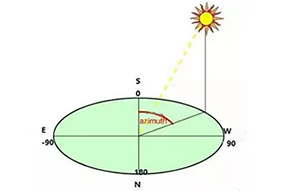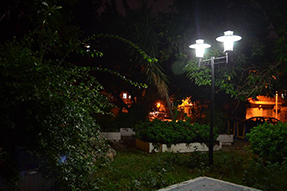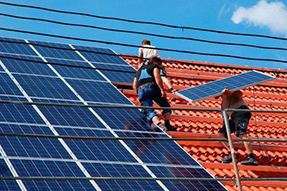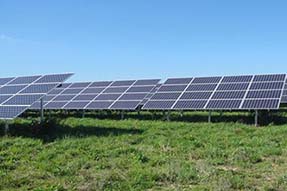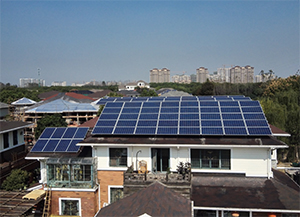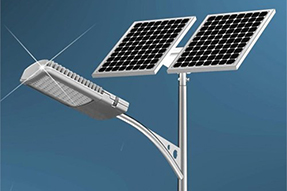How to Set Azimuth and Tilt Angle to Improve Solar Power Generation ?
As solar power is a cleaning energy, its application is fast increasing spread the world.
Presently, the cost is still high to install a solar power generation system, from present cost of power generation in China, the cost of solar panel is about 40%~50% in whole of solar system, therefore, in order to make the most of solar energy, it is also an important that how to decide Azimuth and Tilt of solar pv array.
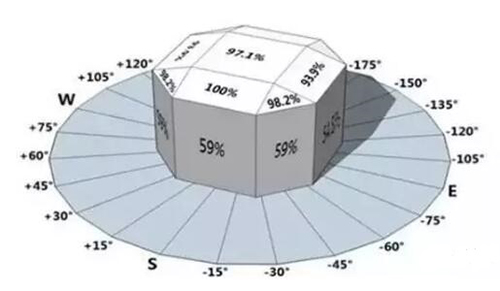
1. Definition
The Azimuth and Tilt confirmation of solar panel is the one of important factors in the design of solar pv system.
The Azimuth is the angle of Easy, West, South and North. In terms of solar pv system, the Due South of Azimuth is 0°, it is minus angle from South to East to North, it is positive angle from South to West to North. For example, the Azimuth is -90° if solar is in the Due East, it is 90° if solar is in Due West.
The Azimuth has decided the incidence direction of sunlight, decided the lighting conditions of solar from various different orientation hillsides or buildings.
The Tilt is included angle of horizon and solar panel. The Tilt is 0° if solar panel parallel to horizon to design, the Tilt is 90° if the solar panel is vertical to design.
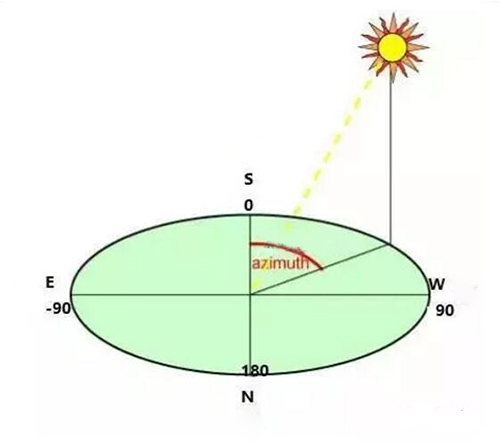
2. The decision of Azimuth.
In China, Usually the Azimuth of solar panel is orienting Due South, to guarantee the maximum power generation from solar. The power generation of solar pv array would decrease 10%~15% if Azimuth deviating Due South for 30°; It would reduce 20%~30% if deviating Due South for 60°.
If it is limited by the installation location where have shadow, such as rooftop, earth slope, hilly area, building structure, etc, then need consider them with Azimuth, to make the most of current terrain and effective area, and to do the best to avoid the shadow from building or trees.
It would not have more influence only if it is in the scope of +-20° of Due South, to do best to deviate South-Western within 20 ° if it has condition, to make the peak solar power generation be in around midday, which benefits to generate in Winter.
When designing some BIPV (Building Integrated PV), when the paving area of solar cells is not enough, the solar cells are also paved in Due East and Due West.
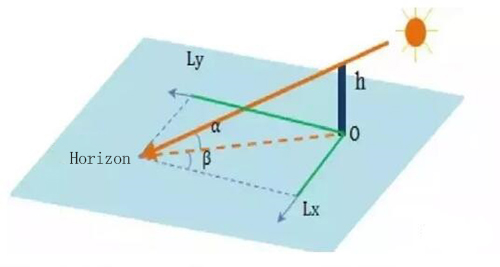
3. The Tilt Decision.
Tilt is the included angle of solar pv array and horizon, and it is hopeful that this tilt is to make the most solar power generation. The optimal tilt has relative with local geographical latitude, the relative tilt is big when latitude is high, therefore, especially for on-grid solar power system, besides to consider the sliding of snow, the other factors should be considered as well.
Regards to Due South (Azimuth is Zero), when Tilt gradually towards to the optimal tilt, the insolation is gradually increasing up to the maximum, the insolation would gradually decrease if continuing to increase the Tilt. Especially when the Tilt is over 50°~60°, the insolation would sharply decrease, the solar power generation would be the least when the solar pv array is vertical to be put.
In terms of no Zero Azimuth, the insolation of slope is on the low side, the max insolation value is closing to horizon.
Above Azimuth, Tilt and their relation, it need be actually considered according to specific project design.
4. The Ideal Tilt.
The most ideal tilt is to make the solar power generation at the most, while the power generation difference of Winter is small.
Usually, the local latitude or plus some value on the local latitude is utilized as Tilt of solar installation. Of course if having computer software to assist to calculate, the Tilt can be optimized, that would be better if both of above calculation are closing, which is very important for high latitude area.
The horizon solar radiation has big difference for Winter and Summer, for example, the difference is about 5 times in Hei LongJiang Province, China. If to design system is according to horizon solar radiation, the capacity of storage battery would be too big, to cause more higher investment.
If to choose the ideal tilt, the difference would be small in Winter and Summer, the capacity of battery also can be reduced, to get a balance, so that the cost of solar system is more lower, more reasonable design.
If don’t have condition to optimize Tilt by computer software, the Tilt also can be approximately calculated according to local latitude.
When latitude is 0°~5°, the tilt is equals to latitude.
When latitude is 26°~40°, the tilt is equals to latitude plus 5°~10°.
When latitude is 41°~55°, the tilt is equals to latitude plus 10°~15°.
When latitude is above 55°, the tilt is equals to latitude plus 15°~20°.
But for different type of solar power generation system, the installation tilt is different. Such as light-operated solar street light system and other likely solar systems, the working time of their loads is different according to Season, their feature is to adopt natural lighting to decide the working time each day.
The solar radiation is short in Winter, solar energy is small, while those loads which works in night have big power consumption. So, when design solar system, the Winter should be considered, the Tilt can be decided according to generate the most power in Winter, its Tilt should be slight bigger than local latitude.
In terms of solar pump, air condition or other loads for Summer, then should consider to generate the most power in Summer, its Tilt should be slight smaller than local latitude.
Bingsolar Power, 17th, March, 2018
